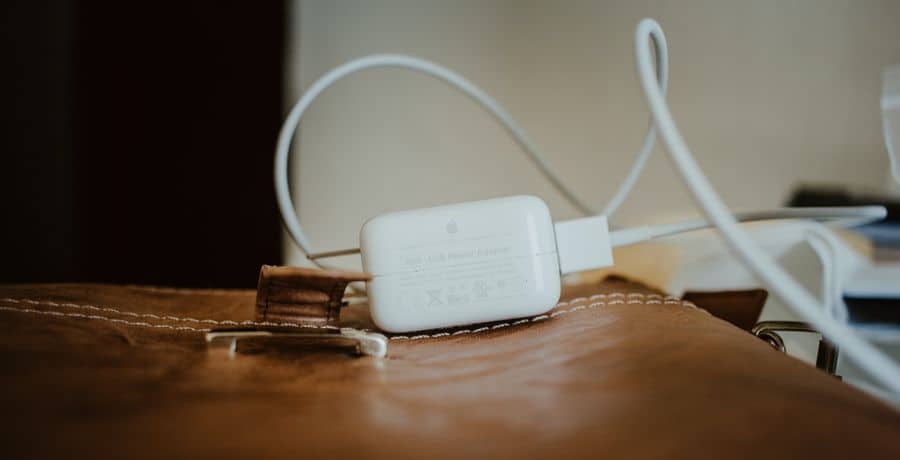
We rely on technology for so many things these days. But what good is our precious devices if our USB charger wears out and they simply won’t charge? Not all chargers will last forever. However, there are several things you can do to make them last longer. Understanding what pieces can wear out first can be a giant help in knowing what to do and what not to do! As well as getting the most out of your investment.
Do USB Chargers Wear Out? Yes, USB Chargers will eventually wear out. Here’s how to prolong the life of your charger:
- Pay attention when plugging in the USB charger and disconnecting
- Do not bend any wiring
- Store properly
- Keep cord and connectors clean
What would cause a USB charger to wear out, though? And what part of USB chargers are most likely to wear out first? Let’s find out.
Do USB Chargers Wear Out?
As with anything else made these days, a USB will wear out. It is not necessarily the chargers themselves that wear out, but the cords and connections. If there is a USB charger out there that lasts forever, it’s not being sold in any store I know of, as they all tend to show an engineered lifespan.
A USB outlet is typically quite durable, but is made of materials that can get damaged, and over time can get dust and debris in it. The key is to treat your cords with care. If you are aware of what breaks down in the USB charger, you can be mindful not to do certain things that can damage it.
There are premium USB chargers on the market. And the best ones can last up to several years if you treat them right. They will be in good working condition until they eventually need to be replaced.
Cheap USB chargers tend to give us a few weeks to a few months before they break, wear out, or simply stop working. Although price is not always an indicator as to how long something will last, it is typically true of USB chargers. If you grab a $5 or below charger in the store check-out line, for example, don’t expect the unit to last as long as a more quality accessory.
The Port

Where all the magic happens, the port. A port is the outlet or opening (female end) created specifically for a plug (male end), such as a rectangular shaped USB plug. The port itself does not usually “wear out,” but they can get damaged over time.
Most USB ports do not have a protective covering, leaving them open and vulnerable to collecting dust, corrosion, and anything else that can fit inside, out of reach.
Another reason a USB port would wear out is constant plugging and unplugging of the cords. Yes, the whole purpose of a charger is for on and off use, and not to be continuously plugged into the source, but the repeating pushing and pulling forces do have an effect on the charger and cable.
We are often rushing here and there grabbing our phone to take with us, and not always paying attention to what we are doing. The next time you go to plug in your device, make sure that there is sufficient lighting to be able to see what you are doing. And, get in there to get a closer look at the task at hand. It is quite possible that you have the plug upside down, as we all know can happen. More often than we’d like to admit.
Quick note: The above mention is more of a point concerning rectangular USB-A and micro-USB ports, which require one-direction insertion, whereas newer USB-C can be plugged both ways. But all versions should still be used with care and not forcibly “jammed” so that the metal tabs and charging contacts in the charging ports stay in good shape.
The Wiring

From the outside we can only see the coating over the wires, tricking us into thinking there’s only one wire under there. But the truth is there are many tiny wires twisted together and then covered and inserted in the neck of the male end of the USB plug.
Though there is extra protection provided by the hard plastic sleeve of the plug, it is not strong enough to stand up to prolonged bending and twisting. The wiring of a USB charger is simply thin metal threads, many of them together to form a connection linking a power source to a device that needs electricity to function.
Wires that are bent over and over again do have a breaking point. How strong the wires are will determine how much wear and tear they can withstand.
In previous articles, I’ve mentioned how lower quality USB cables can fall victim when exposed to extreme high and low temperatures, especially when they are left outside in your car. After going through a ton of them, my hands down favorite is this USB charging cable by Anker, as it is the first quality accessory after over a year of use to not fray, break, or stop working, even when leaving it in my car overnight through hot and freezing temperatures.
The Connectors
You know that tiny little piece that you plug into your device? Yes, the connector. It is small and fragile. This fragile piece of plastic and metal usually has several “teeth” that can be bent, or otherwise damaged. Once those teeth are not in pristine condition, the reliability of the cord goes right out of the window.
So, how can we keep our teeth straight? Basically, the same way we should be treating the other elements of the USB charger. If we are mindful of how we are inserting our plug, how we are storing it, and keeping it free of dirt and debris, we can prolong the life of the connectors, and in turn the USB charger.
The connector often has plastic elements to it, as well. Plastic can crack over time. If there is a plastic housing to your USB charger, you should continually check to see if it is still in good condition. If not, it is a good idea to replace it right away in order to reduce the risk of damaging any expensive devices that you’re charging from it.
The Effect
When a USB charger starts to wear out, or show signs of damage, it will be easy to tell.
The signs may include visible things like crimping near the ends of the wiring. Crimping is a simple way to tell that the wires inside have become bent, or have snapped, and therefore are not straight anymore. The bent wires inside show outwardly in ways like wrinkled/crimped cords.
One major sign of a USB charger that is on its way out is a loose connection. When a charger is brand new, the connection between your device and the connectors will be snug and secure, without showing signs of any wiggle room. But when it’s worn out, the connector will be ineffective at staying in place due to damage.
Other than a loose connection and wrinkled wiring, you should be able to diagnose a USB charger’s state by how efficiently it is doing its job. Is your device taking longer than usual to charge? Or perhaps it doesn’t seem to be charging at all; the little indicator light on your phone might turn on and off intermittently.
Before you take your device in for service, perhaps it’s time to buy a new charger and see if that is where the issue is coming from. When a USB charger is worn out it will start to give weak to no amount of charge for your device.
Solutions for a Worn-out USB Charger

Ok, so we know that our chargers realistically have an expected life span of a few months, right? If we are lucky enough, they may last a year, or two. We can buy the best charger that money can get us, and they still will not last the lifetime of the device they are meant for.
Thankfully there has been a cool little accessory invented that does a pretty good job at prolonging the life of the charger. If your main problem has always been crimping of cords due to bending or twisting of wiring you may already be familiar with this:
A “cord collar” is a stealth piece of plastic or rubber that slips over, or clips onto your cords at the neck where the wire meets the connectors. This genius invention gives the wiring extra support so that bending and twisting won’t damage the cord.
Another way we can make our chargers last longer is to store them properly. If you’re the kind of person that constantly chucks their charger into a bag full of stuff, or into their pocket, you know that it can easily get tangled up, knotted, bent, and even dirty. If you are mindful of how you store your power cords you can prevent these issues from arising.
USB chargers may be a dime a dozen, but that doesn’t mean we shouldn’t take care of our belongings. Sure, they are easy to come by, but why not prolong their life and save the Earth some plastic?
